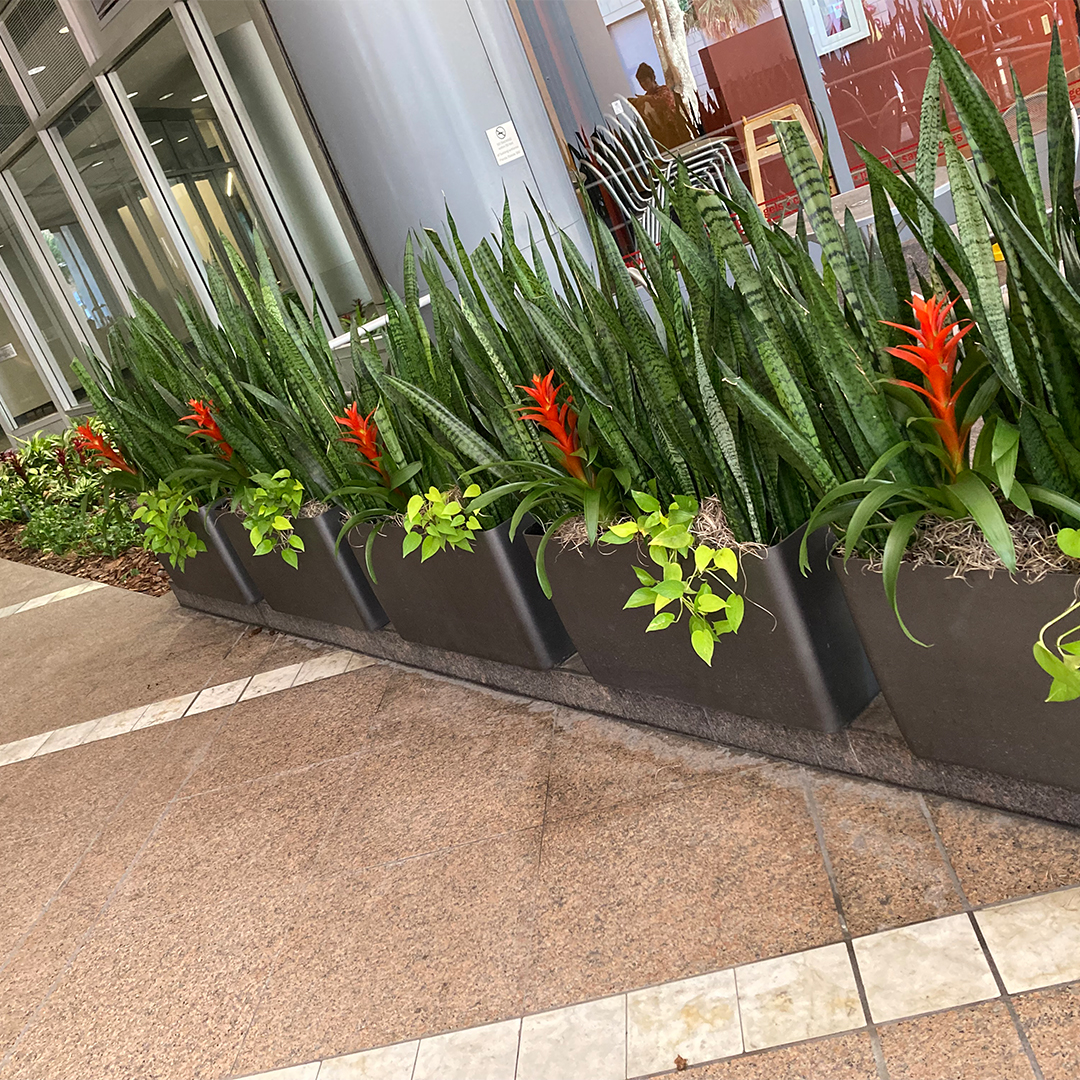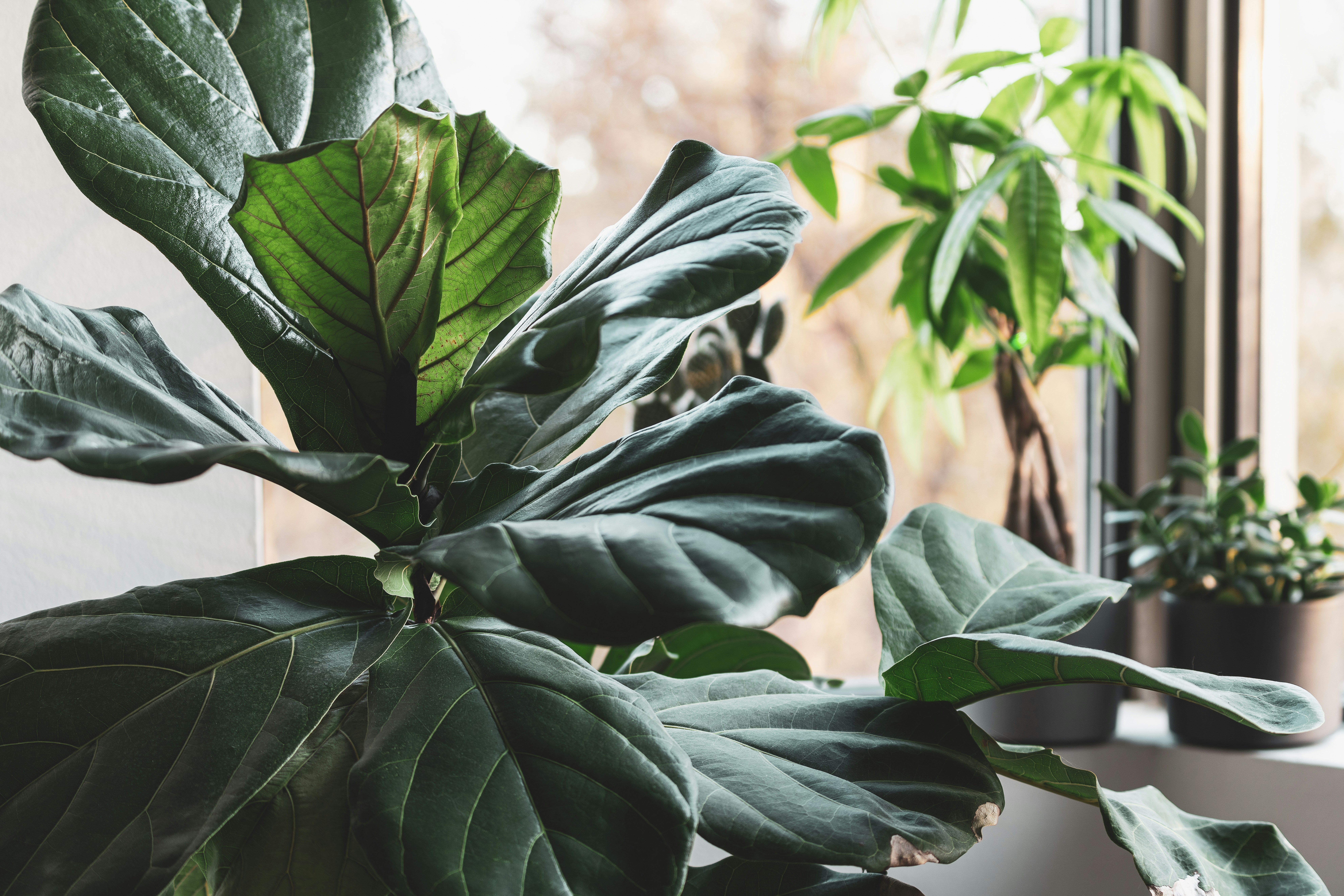Choosing the Right Plants for Your Corporate Space
The benefits of adding live green plants to your corporate space are well-known. But many property managers aren’t sure where to begin, so let’s discuss how to choose the right plants for your place of business.
Designing plant installations that fit your space requires a thoughtful approach, blending aesthetic appeal with functional considerations. Whether you’re decorating an office or commercial environment, here’s a comprehensive guide to creating plant installations that harmonize with your corporate space.

- Assess the Space: Evaluate the space where the plant installation will be placed. Consider the room’s size, layout, lighting conditions, and style. Take note of any architectural features like windows, columns, or built-in shelves that might impact plant placement. Identify the primary purpose of the plant installation. Are you aiming to enhance aesthetic appeal, improve air quality, or create a calming atmosphere? Understanding the purpose will guide design choices in selecting the right plants. Do you need help? Consider professional plant leasing services.
- Consider Light Conditions: Different plants thrive in varying light conditions. Assess the natural light available in the space. Areas with bright, indirect light are ideal for plants like ferns and pothos, while low-light conditions may suit snake plants or ZZ plants. If natural light is insufficient, consider supplemental lighting. Grow lights can be used to ensure plants receive the right amount of light, especially in spaces with limited natural light.
- Choose the Right Plants: Select plants that complement the space’s light conditions and design. Consider minimalist plants like succulents or air plants for a modern, sleek look. Opt for tropical plants such as monstera or rubber trees for a lush, vibrant feel. Choose plants that are proportionate to the space. Large plants like fiddle leaf figs work well in spacious areas, while smaller or compact varieties are better suited for tighter spaces. Consider how much care each plant requires. Low-maintenance plants are ideal for busy environments, while more intricate plants may need regular attention. (Check out how plant leasing can help.)
- Design and Layout: Create focal points with statement plants. Large, striking plants can draw attention and anchor a room. Place them in corners or entryways to make a visual impact. Layer plants at different heights and cluster them to create depth and interest. Use plant stands or shelves to vary heights and add dimension to the display. Maintain balance by arranging plants in a symmetrical or asymmetrical pattern, depending on the desired effect. Symmetry can create a formal, orderly appearance using the right plants, while asymmetry adds a more dynamic, natural look.
- Planters and Containers: Choose planters that match the overall style of the space. Sleek, modern planters work well in contemporary settings, while rustic or ceramic pots might suit a more traditional decor. The material of the planter can also affect the aesthetic—metal, ceramic, and woven baskets offer different looks and textures. Ensure planters are appropriately sized for the plants. A pot that’s too small can restrict root growth, while one that’s too large may lead to overwatering issues. Also, check that planters have proper drainage to prevent waterlogging and root rot.
- Incorporate Vertical Space: Utilize vertical space by incorporating wall-mounted planters or shelves. This approach can save floor space and add visual interest. Vertical gardens or living walls can also create a dramatic effect and serve as a focal point. Hanging planters can add a whimsical touch and make use of overhead space. Consider using macramé hangers or decorative hanging pots to integrate plants into the decor.
- Enhance with Accessories: Incorporate accessories like decorative stones, moss, or plant markers to enhance the visual appeal of your plant installations. These elements can add texture and complement the overall design. Ensure that plants are integrated seamlessly with existing furniture and decor. Avoid overcrowding or placing plants in areas where they might obstruct movement or function.
- Regular Maintenance: Develop a regular care routine for watering, pruning, and cleaning plants. This ensures they remain healthy and continue to enhance the space effectively. Keep an eye on plant health and address any issues promptly. This includes managing pests, checking for signs of disease, and adjusting care as needed. Learn more about how plant leasing services will care for and maintain your plants.
Tropex employs a team of designers, horticulturalists, and botanists to ensure your corporate space has the most beautiful plant displays filled with the right plants for your vision and purpose. Call today to learn more about our Sarasota area plant leasing services.


